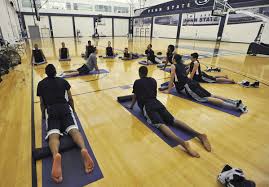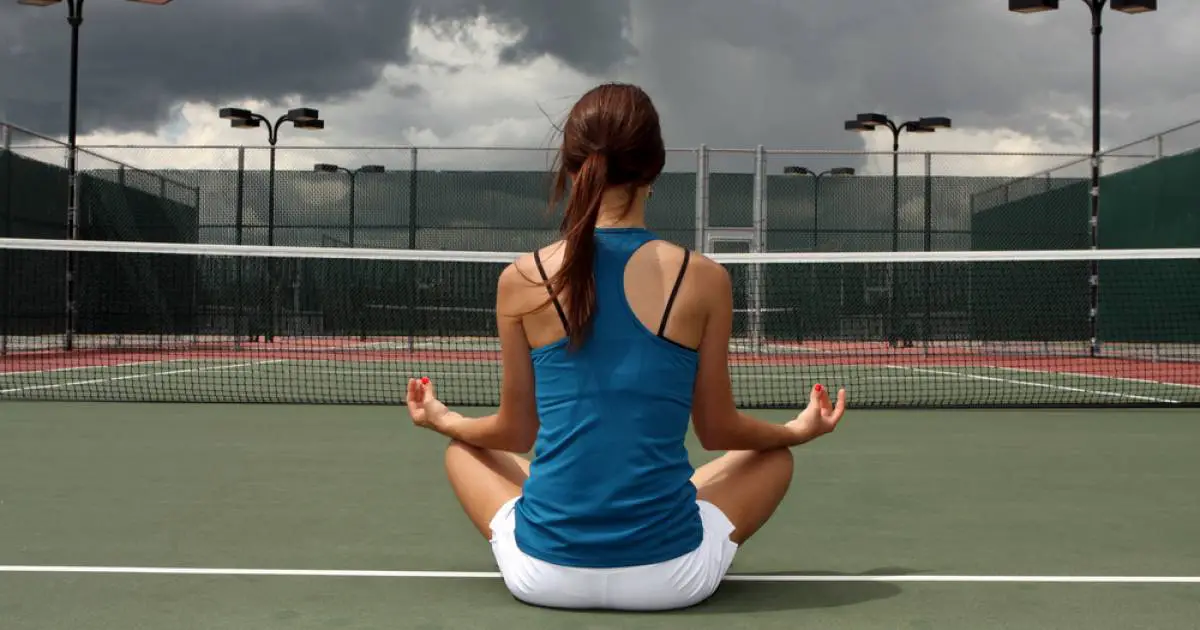Table of Contents
![]() I recently gave a talk to a group of athletes (ages 18-24) about meditation and sport. There questions were good and probably similar to questions that most people have when they first hear meditation recommended as a good mental practice for athletes. This is a short recap of questions and answers that you may find helpful as you consider adding meditation as part of your training as an athlete.
I recently gave a talk to a group of athletes (ages 18-24) about meditation and sport. There questions were good and probably similar to questions that most people have when they first hear meditation recommended as a good mental practice for athletes. This is a short recap of questions and answers that you may find helpful as you consider adding meditation as part of your training as an athlete.
*This post may contain affiliate links. As an Amazon Associate we earn from qualifying purchases.
Q1: What meditation should I do?
A1: I recommend experimenting with a few types to determine what best works for you. Some examples include Mindfulness Meditation (also known as Vipassana), Heart Rhythm Meditation, Transcendental Meditation and Guided Imagery. Japa Meditation is also widely used even if the name of this meditation type is often not familiar to people. Japa Meditation is repeating a word or mantra over a period of time. My personal recommendations are to practice Mindfulness Meditation or Japa Meditation. Check out these YouTube Videos for examples:
http://youtu.be/dEzbdLn2bJc
http://youtu.be/GzVaLHIohC0
 Mindfulness Meditation is probably one of the more popular types of meditation used and it is about being present in the moment, allowing your thoughts to simply come and go, observing them but not following them or getting attached. The metaphor that is sometimes used is imagining your thoughts to be like white puffy clouds that simply keep moving as you watch others pop up and float away. You do not follow just one cloud, like pone idea. You let them keep moving through and you watch.
Mindfulness Meditation is probably one of the more popular types of meditation used and it is about being present in the moment, allowing your thoughts to simply come and go, observing them but not following them or getting attached. The metaphor that is sometimes used is imagining your thoughts to be like white puffy clouds that simply keep moving as you watch others pop up and float away. You do not follow just one cloud, like pone idea. You let them keep moving through and you watch.
Q2: Does meditation involve long periods of sitting?
A2: No, it does not. I personally do mindfulness meditation each morning for 10 minutes. But there are more activity based meditations for those who do not want to sit. Sometimes engaging in a mindfulness walk or a creative art project, or yoga can all be meditative. The idea is to be present and fully engaged in the activity. For example, when doing dishes you might attempt to be mindful and focus on each dish rather than daydream about work or school. You can even check out a five minute meditation app for your phone that is easy to use on a daily basis called “Everyone can meditate” by Sita Dookeran. You should also try the free 21 day meditation program offered by Deepak Chopra found at the Chopra Center.
Q3: How does this relate to sport?
A3: Meditation practice helps athlete practice switching focus. Athletes face many stresses and must learn quickly to have a specific focus to help them compete or to recover after completion. The choice to focus on stresses or not is always a choice. Also, when athletes describe being in the ‘zone’ their brains are actually more quiet and comparable to people in meditation. Being in the zone often is described as being fully in the moment with a sense of loss of time and the task feeling effortless. Meditation is a practice of zone, so to speak. Ultimately, meditation also offers a method of grounding oneself, a practice that can help you build a method for calming yourself and putting things in perspective.


